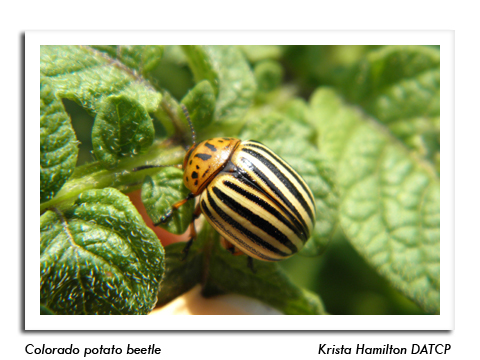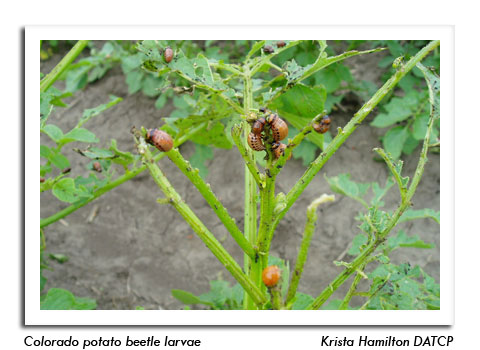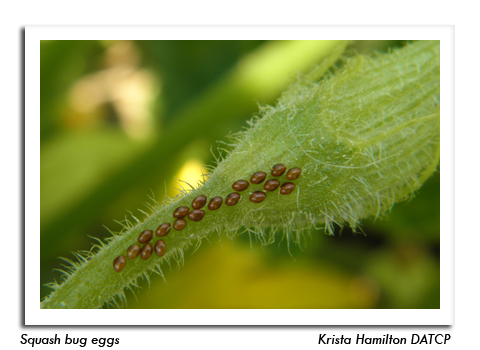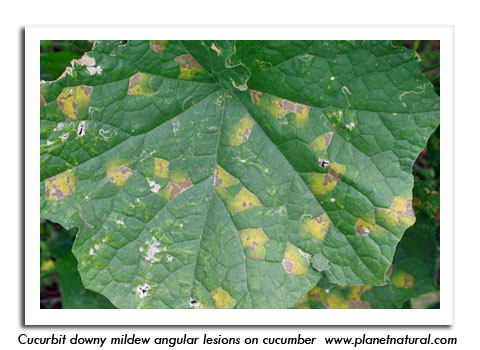
 |
|
|
Vegetables
Volume 61 Number 12 Date 07/21/2016 COLORADO POTATO BEETLE - Second-generation larvae are appearing on potatoes in the southern and west-central areas. Late-season control of this pest may be warranted if defoliation exceeds 30% during tuber formation. Treatments should be applied when most of the population reaches the intermediate third-instar stage, presuming this does not conflict with label recommendations or resistance management. Proper timing permits most eggs to hatch, but kills the larvae before they reach the destructive fourth instar. Potato producers are reminded to avoid consecutive use of the same insecticide product or the use of different products with similar modes of action. SQUASH BUG - Economic counts of two to three egg clusters per plant were observed this week on squash in a Dane County home garden. Continued scouting of lower leaf surfaces for eggs is strongly advised and controls should be implemented for flowering plants when a threshold of more than one egg cluster per plant is found. If not controlled at this time, plant damage and yield loss can be expected. Handpicking all stages from the undersides of leaves is suggested if only a few plants are affected, or dusting diatomaceous earth over plants can help reduce numbers. If levels become intolerable, spot treatment with an organic insecticide or a pyrethroid may be justified. Insecticide products are generally only effective against the small, newly hatched nymphs. ONION DOWNY MILDEW - The confirmation of onion down mildew (ODM) in Rock County by the UW last week should signal to onion growers to begin closely monitoring production fields and gardens for disease symptoms. ODM is a very destructive disease that can rapidly develop and spread throughout onion plantings when temperatures are favorable (less than 72°F) and foliage remains wetted by dew, fog, humidity, irrigation or rain. Symptoms are most noticeable on older leaves and seed stalks, and include small whitish spots that elongate and produced violet, velvety growth on the foliage surface. Infected leaves become pale green or yellow, turn brown and then collapse. Although ODM does not kill onion, it can reduce bulb quality and yield, and can affect storability. Growers who suspect ODM are advised to submit a sample to the UW Plant Disease Diagnostic Clinic for confirmation. LATE BLIGHT - Disease severity value accumulations in the state's primary potato production regions (i.e., Antigo, Grand Marsh, Hancock and Plover) have far exceeded the late blight risk threshold, thus conditions required for disease development have been met. Home gardeners and farmers, whether conventional or organic, should consider preventive fungicide applications to protect their tomatoes and potatoes. Registered fungicides for potato late blight in Wisconsin are listed at the UW-Madison Vegetable Pathology website: http://www.plantpath.wisc.edu/wivegdis/pdf/2016/Potato%20Late%20Blight%20Fungicides%202016.pdf. No cases of late blight have been confirmed in Wisconsin as of July 20. CUCURBIT DOWNY MILDEW - Growers of cucumbers and other susceptible vine crops should select protectant fungicides soon and prepare to begin weekly treatments now that CDM inoculum has arrived in the Great Lakes region (in southwestern Michigan). UW Vegetable Pathologist Dr. Amanda Gevens recommends a seven-day spray interval for cucumbers until CDM is confirmed in the state, followed by a five-day interval once CDM is found. A seven to 10-day interval is appropriate for cantaloupe, gourd, melon, pumpkin, squash and zucchini. Fungicide options are listed in UW-Extension publication A3978: http://learningstore.uwex.edu/Assets/pdfs/A3978.pdf. CDM and other water mold diseases are best managed before symptoms develop. IMPORTED CABBAGEWORM - Moths are common around home gardens from Green to Marinette County, indicating the potential for damaging larval populations next month. Egg deposition on cole crops is expected to intensify by early August. Scouting is suggested through harvest. -- Krista Hamilton, DATCP Entomologist 





|
|
|